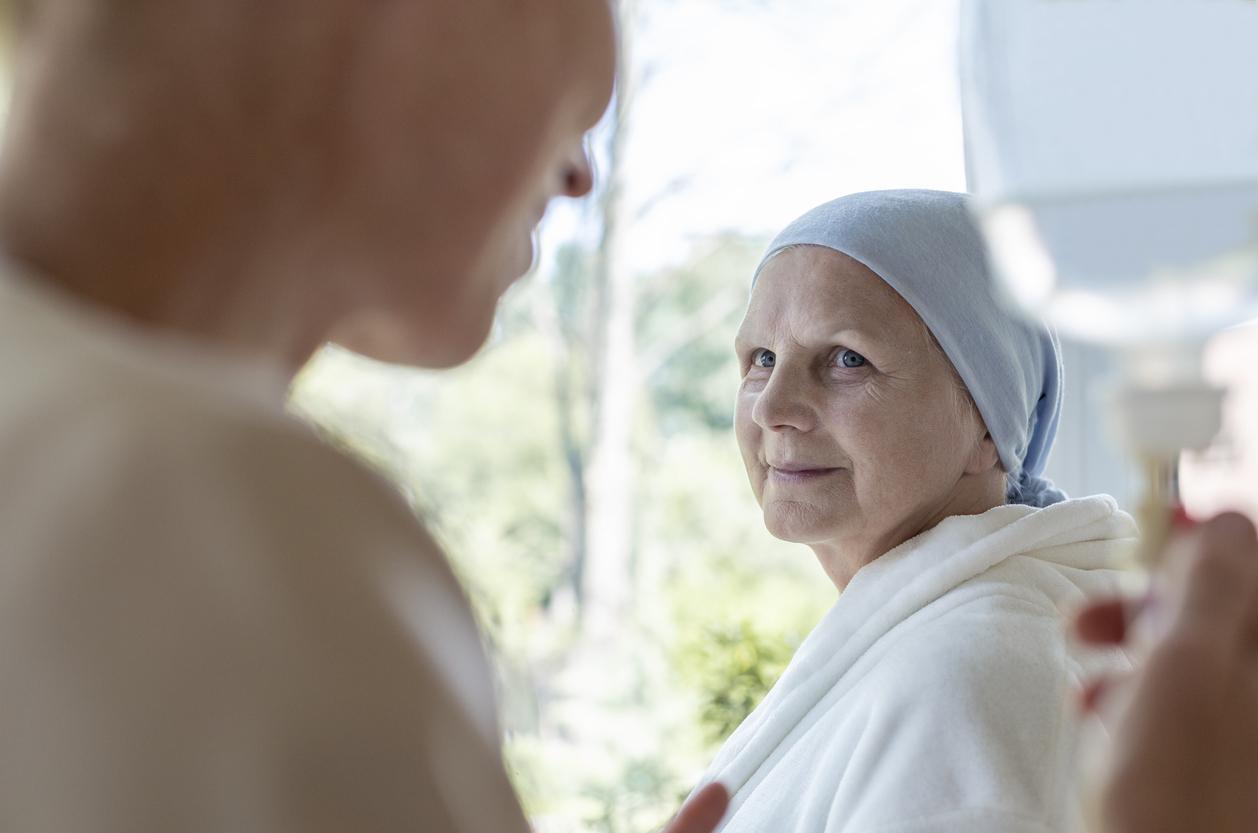A new means of overcoming resistance to chemotherapy has just been discovered in acute myeloid leukaemia, for which it is the main cause of mortality. By the authors’ own admission, the result is “amazing” and could considerably improve the survival of these patients.

The absence of a protein called MTF2 alters gene expression in acute myeloid leukemia (AML) cells, allowing them to develop resistance to chemotherapy. Researchers at the University of Ottawa, Canada, found that MTF2-deficient acute myeloid leukemia cells overexpressed a cancer promoter gene, called MDM2. Indeed, this gene normally blocks the p53 protein which is suppressive of cancer and disrupts the cell cycle process, which leads to cell death when chemotherapy damages the cells.
They then tested the effect of blocking MDM2 in a model of chemotherapy-resistant AML mice. All of the mice that received the MDM2 blocker treatment at the same time as chemotherapy survived and showed “complete remission”, while those that received chemotherapy alone all died. This study is published in the journal CancerDiscovery.
Leukemia and chemoresistance
Acute myeloid leukemia is a cancer of the blood that begins in the bone marrow, where the body normally produces blood cells, and then spreads rapidly through the blood. In some cases, it can also spread to other organs, such as the liver, spleen, lymphatic system, testicles, brain, and spinal cord.
Although rare, AML is the most common blood cancer in adults. It usually strikes after age 45, but can also affect young people, including children. In the United States, the average lifetime risk of developing AML is approximately 0.5%.
Most people who die from the disease succumb to resistance to chemotherapy. About a third of patients are resistant from the outset, while 40 to 50% respond to initial chemotherapy, but resist during relapse. Overcoming resistance to chemotherapy is therefore a major challenge in the treatment of AML.
MTF2 helps block cancer-promoting gene
In previous work, Professor Stanford and his team found that MTF2 was important for making blood cells. They set up this new study to explore the protein’s role in cancer. Using samples taken from people with AML, the team found that the odds of staying alive 5 years after starting chemotherapy were three times higher in people who had “normal MTF2 activity” in their blood cells. leukemic cells compared to those in which the activity was low.
At first, they considered using MTF2 as a biomarker to identify people with AML who might benefit the most from experimental treatments. But they then deepened their knowledge of the activities of MTF2 and realized that the protein played a fundamental role in modifying the expression of the gene favoring this leukaemia, MDM2, and in reducing its expression (therefore reducing the risk of AML) .
MDM2 blockers associated with chemotherapy
When the team exposed leukemia cells with normal MTF2 activity to chemotherapy, they found that cells damaged by chemotherapy inevitably underwent programmed cell death (called “apoptosis”). Indeed, the presence of MTF2 allows the inhibition of MDM2. On the other hand, leukemic cells with low MTF2 activity did not have the possibility of reducing the expression of MDM2: these cells therefore did not enter the process of programmed cell death after chemotherapy and continued to live and divide. , even when the team exposed them to heavy amounts of chemotherapy.
The researchers then tested MDM2-blocking drugs in mouse models of acute myeloid leukemia. They also designed the cellular models using chemo-resistant AML cells of human origin. All mice and cells that received both MDM2 inhibitors and chemotherapy survived the 4-month study, while those that received only chemotherapy died.
Amazing results but still work
The study’s co-lead author, William Stanford, a professor at the University of Ottawa and also a researcher at The Ottawa Hospital, said the team was “blown away” by the results. “If these results,” he continues, “are confirmed in clinical trials, we could offer a new treatment to people who are dying of their disease today.”
There is still a lot of work to be done, such as finding the right drugs for a clinical trial and developing a test to identify patients most likely to respond to the experimental treatment.
.

















